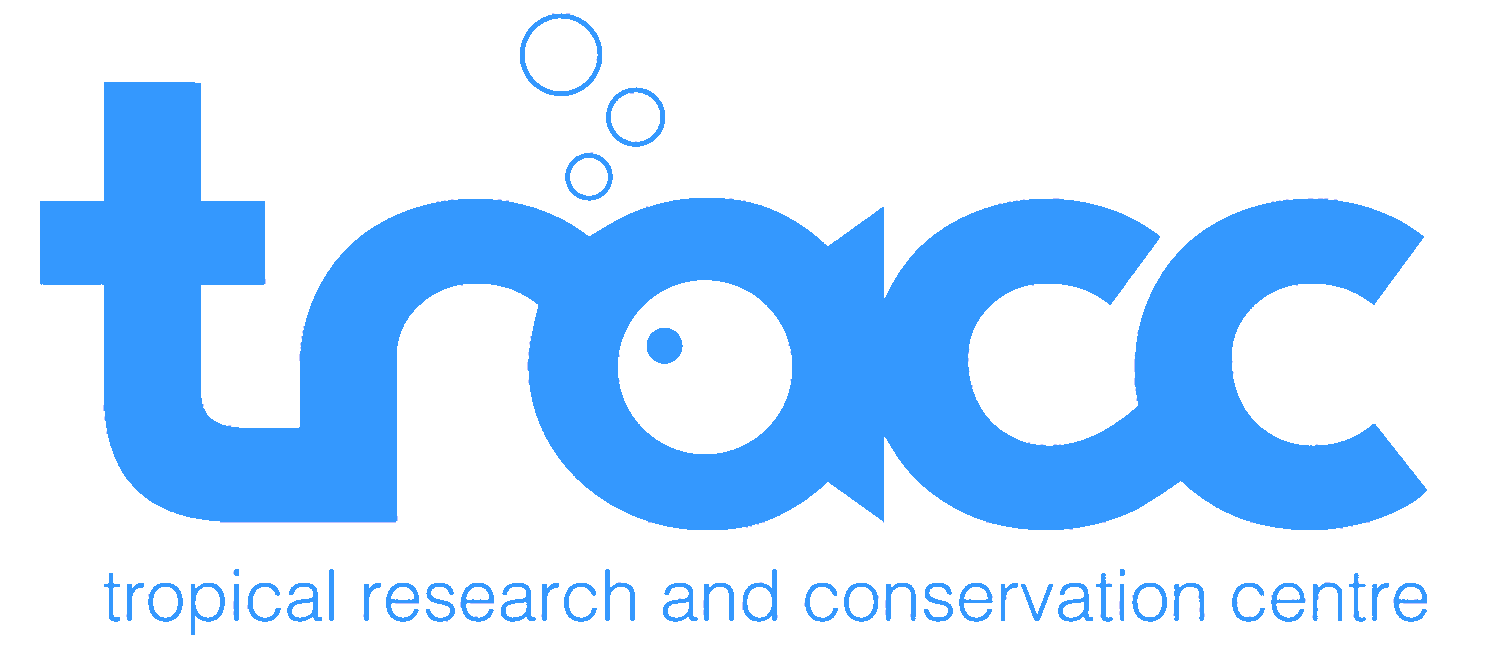Current Projects
TRACC develops and executes numerous projects involved with marine conservation, notably that of coral reef restoration. TRACC has planted over many coral fragments over more than12 years, drastically improving the destroyed reefs of Pom Pom Island, employing numerous methods along the way. TRACC works together with volunteers from all over the world to turn these projects into a reality. TRACC has a number of other projects ranging from invertebrates all the way to marine reptiles and megafaunas. As the current state in Borneo nears critical and pivotal years, the work being conducted needs environmentally aware individuals with a genuine love and passion for the world’s oceans. Let us, as a society of people who love, depend and rely on the oceans come together for the protection and conservation of the world beneath the waves.
Turtle Conservation
Pom Pom island is one of six important nesting and feeding sites for Green and Hawksbill turtles in the Semporna area. Turtles nests year-round but peak nesting is July to November.
Unfortunately poaching of turtle eggs is still a big threat to turtle populations in Sabah and even on Pom Pom Island itself. Nest poaching is devistating to turtle populations.
Poachers dig up nests and sell the eggs for consumption, sometime fetching up to RM600 per clutch. TRACC, in association with neighbouring resort Mussah Poteh Resort, patrols the island in order to find nesting turtles. The eggs are collected and relocated to the TRACC managed hatchery, where they can safely incubate until they hatch and are released into the ocean.
Turtle Identification
All turtles hold a unique “finger print” like pattern for the formation of scutes on the left and right profiles of its face. Allowing the everyday diver with the correct equipment to photograph the left and right side profiles of the subject’s face.
TRACC volunteers take part in ID dives in order to allow us to code and identify individuals in partnership with Malaysian Sea Turtle Photo-ID Network. This means we can gain a solid understanding of the population density of Green and Hawksbill Turtles. Population numbers are still recovering from the onslaught of decades and decades of butchery and nest poaching. Through assessing population statistics, we can then begin to grasp the true distribution of turtles within Malaysian Borneo and in particular the Semporna Archipelago.
Scientific Research and Surveys
An integral part of what TRACC is trying to achieve is a holistic view of what is happening in the local marine environment. To gain a real time perspective, accurate data is needed on both the fish and the invertebrates in the area as well as on specific projects. For these reasons TRACC runs intensive fish ID and invertebrate ID workshops. We will provide you with all the information however it is upto you to learn it. Once our on-site scientists train you to be proficient in these activities you may be ready to actively participate in our data collection and as a result make a real contribution to marine research.
COTS Collections
The crown-of-thorns starfish, is a large, multiple-armed starfish that preys upon hard coral polyps. It is one of the largest starfish in the world with an appetite to match. In small numbers the starfish has an important and active role in maintaining coral reef biodiversity. However, due to over fishing of its predators and nutrient loading, these carnivorous predators can have population blooms which can devastate a coral reef. Unfortunately human intervention is necessary, we carefully remove COT starfish from the water in order give our already damaged reef a chance to survive and grow.
PAST PROJECTS
ARC Reef
Our ARC reefs are a brand new artificial reef design. ARC stands for Artificial Reef Crest.
Pom Pom island has been drastically affected by historic fish bomb events, an illegal fishing methods which is widespread throughout South East Asia. The coral reefs that have been physically damaged are unlikely to recover, the calcium carbonate coral skeletons are destroyed and the structural complexity lost. As a result, rubble fields are formed and biodiversity is heavily reduced. The ARC reef's unique shape is designed to restore the coral formation by giving a new substratum for rescued coral fragments, reduce the rubble movements that can fall from the crest on other deeper corals and to ensure ecological functionality is restored in minimal time.
Step Reef
On Pom Pom island we have a constantly mobile substrate which has shown no natural improvement. This is due to the angle of the slope as on the north tip of the island, where the slope is less steep, natural rubble consolidation has already occurred and corals now prosper. For these reasons we have been designing and redesigning the step reef for the last 4 years. Our current solution utilises the growth of corals colonies to increases strength of the artificial reef overtime. In addition the design allows for complex 3D structures and rubble consolidation to take place beneath the structure.
Coral transplanting
Accelerating coral reef recovery is a key aspect of what TRACC does. To ensure we make the most of our resources it is essential that we move with the times. We use a method pioneered by Dr David Vaughan called micro fragmenting. Essentially large colonies are broken up into multiple coral fragments and left to grow in our nursery. Once they are ready we replant them into our artificial reefs with minimal distance between each individual fragment. These fragments then grow radially and once the growth allows the coral fragments to touch, they start forming one single colony again. This innovative methodology allow corals to grow 25 times faster than normal and so helps us rehabilitate the reef which would normally take hundreds of years to grow.







